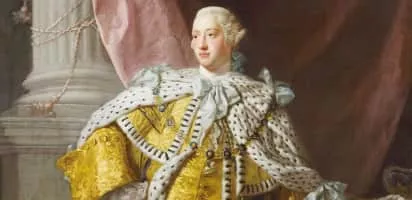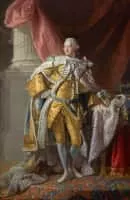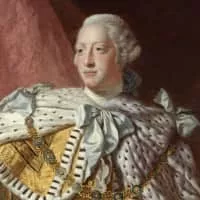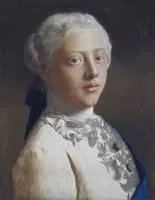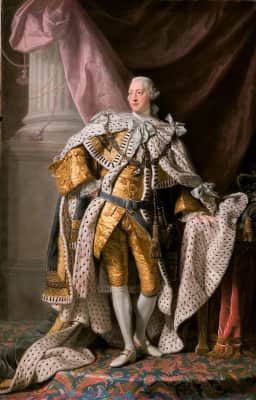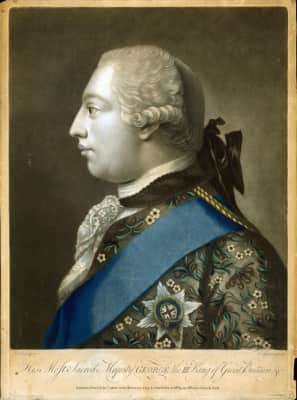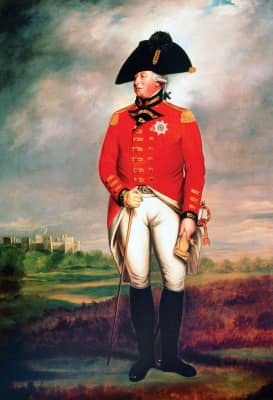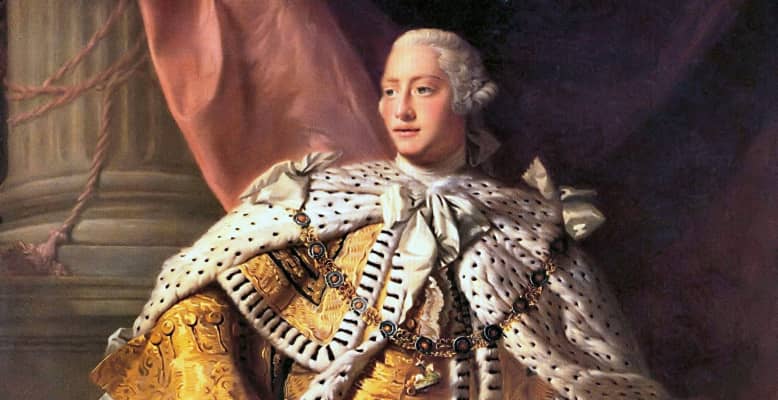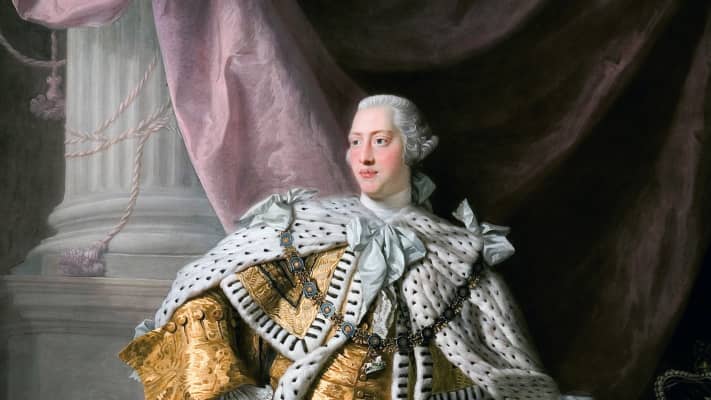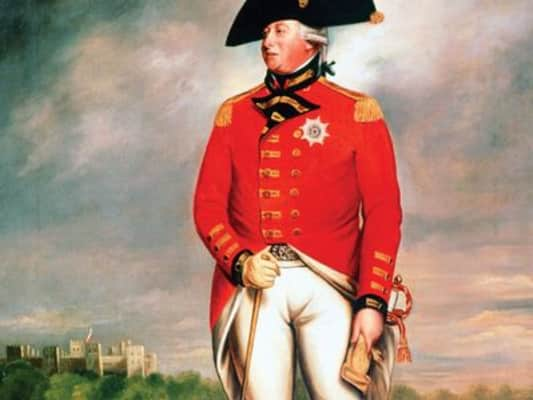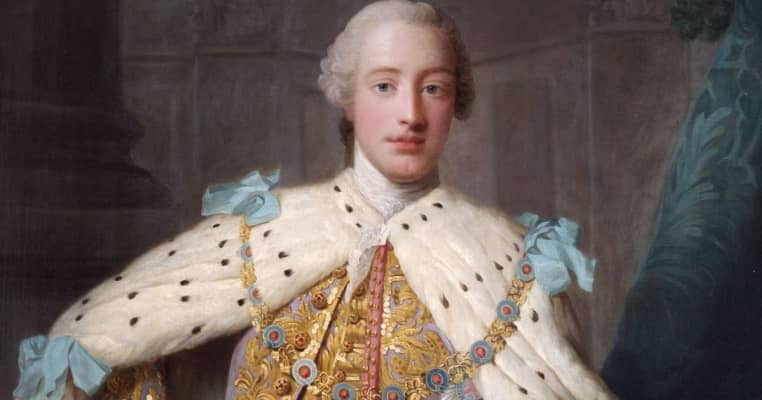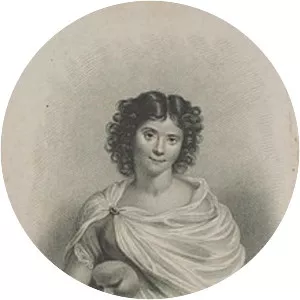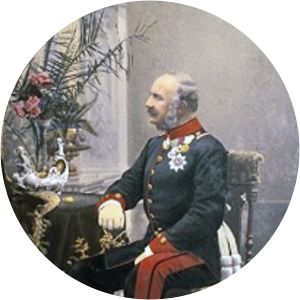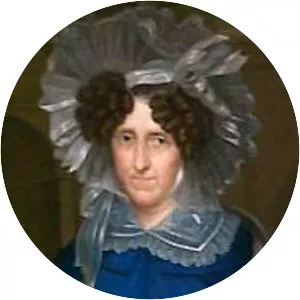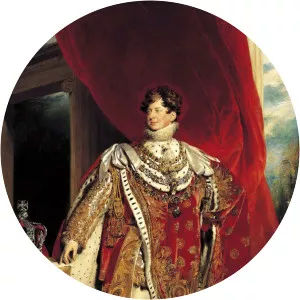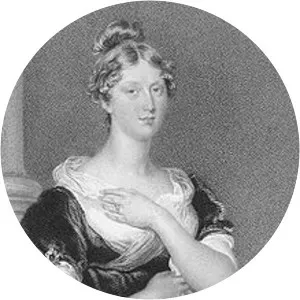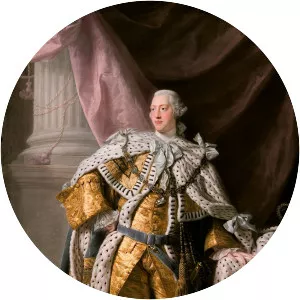
George III
| Use attributes for filter ! | |
| Gender | Male |
|---|---|
| Death | 203 years ago |
| Date of birth | June 4,1738 |
| Zodiac sign | Gemini |
| Date of died | January 29,1820 |
| Died | Windsor Castle |
| Windsor | |
| United Kingdom | |
| Spouse | Charlotte of Mecklenburg-Strelitz |
| Successor | George IV of the United Kingdom |
| Children | George IV of the United Kingdom |
| George IV | |
| Prince Edward, Duke of Kent and Strathearn | |
| William IV | |
| George | |
| Did you know | George III of the United Kingdom lived to 29,823 days, the third-longest among British monarchs. |
| Job | Politician |
| Full name | George William Frederick |
| Siblings | Caroline Matilda of Great Britain |
| Parents | Frederick, Prince of Wales |
| Princess Augusta of Saxe-Gotha | |
| Buried | St George's Chapel, Windsor, United Kingdom |
| Born | Norfolk House |
| London | |
| United Kingdom | |
| Grandchildren | Queen Victoria |
| Princess Charlotte of Wales | |
| Great grandchild | Edward VII |
| Mary of Teck | |
| Date of Reg. | |
| Date of Upd. | |
| ID | 1600682 |
George III Life story
George III was King of Great Britain and of Ireland from 25 October 1760 until his death in 1820. The two kingdoms were in a personal union under him until the Acts of Union 1800 merged them on 1 January 1801. He then became King of the United Kingdom of Great Britain and Ireland.
The Crown: Sets, costumes and props to be sold in London

... State coachBuilt in 1762 for King George Iii, the original Gold State Coach has been used at every coronation since 1831 when King William IV succeeded to the throne...
Prince Harry to call as King celebrates his 75th birthday

... At the age of 75, King Charles is now the sixth longest-lived British monarch, behind Elizabeth II, Victoria, George Iii, Edward VIII and George II...
History of slavery haunts the royals

... Prof Suzanne Schwarz says it was a complex picture, with the royal family in the reign of George Iii deeply divided over the slave trade, in the way that wider society in Britain was divided...
How does the honours system work?

... Order of St Michael and St GeorgeThis Order was founded by King George Iii in 1818 and is awarded to British subjects who have rendered extraordinary and important services abroad or in the Commonwealth...
What perks will Boris Johnson get after quitting as an MP?

... The only prime minister to have been removed from the list of privy councillors was short-lived premier William Cavendish, who was struck off by King George Iii when he suspected him of plotting against him...
Coronation order of service in full

... - William Boyce (1711-79) Psalm 21: 1, 3, composed for the Coronation of George Iii (1761)WE praise thee, O God; we acknowledge thee to be the Lord...
Coronation processions: What to look out for and when
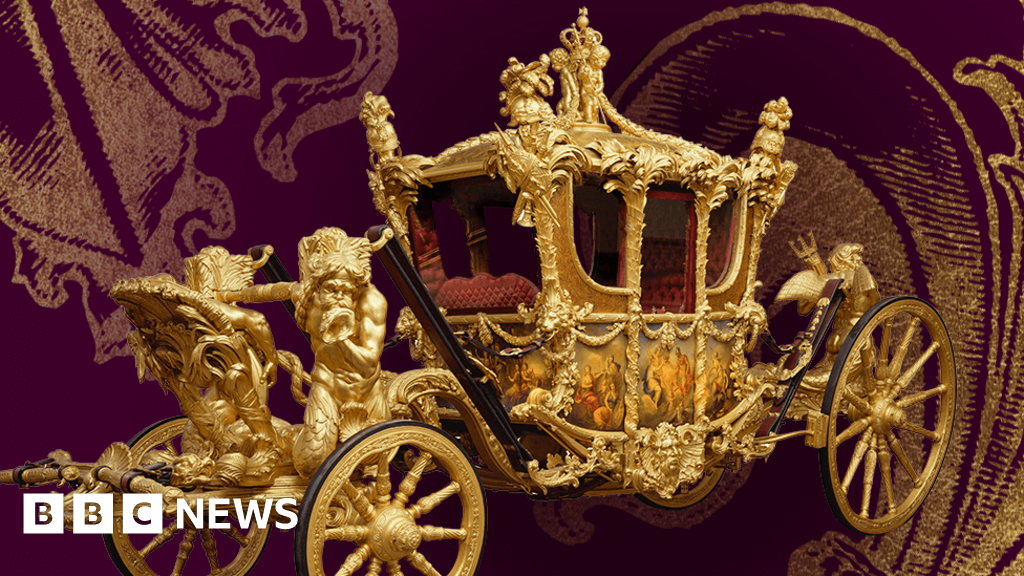
... The Gold State Coach, which is covered in gold leaf and carved decorations, was first used by King George Iii to travel to the State Opening of Parliament in 1762 and has been used at every coronation in the last 200 years...
Royal Society: Four incredible objects that made science history

... His idea was to name it Georgium Sidus - after the sitting King George Iii...
Royal Society: Four incredible objects that made science history
By Georgina RannardBBC Climate and Science Reporter
One of The First scientific findings signed by A Woman is now online for The Public to see for the First Time .
Martha Gerrish's descriptions of The Stars in 1734 joins discoveries by Isaac Newton , Victorian Fossil Hunters and pioneer photographers.
The documents have been digitised by the scientific institution the Royal Society in London.
It hopes it will lead to more discoveries as researchers use the archive.
Around 250,000 documents can now be viewed online, covering everything from climate observations, the history of colour, How To conduct electricity, and animals.
You can access the online archive We have picked out some of the highlights:
First letter signed by A WomanIn 1734 A Woman living in New England called Martha Gerrish wrote to the Royal Society that she had spotted a rare astronomical sight called a Parhelion or 'sun Dog ' - an optical phenomenon that appears in the sky as two halos beside The Sun .
It is The First letter in The Archives of The Society 's Journal - called Philosophical Transactions - known to be sent by A Woman in her own name. Most women at The Time had limited access to formal education and would not be considered intellectual equals to men.
Ms Gerrish acknowledges this inbalance in her letter when she wrote: " If this came from a masculine hand, I believe it would be an acceptable present to the Royal Society . "
The Letter demonstrates that women have contributed to science for centuries even when their work was not public, explains Royal Society historian Louisiane Ferlier.
Victorian dinosaursDinosaur hunter Gideon Mantell sent in detailed drawings from discoveries in 1849 he made of dinosaur fossils on the Jurassic Coast , in southern England.
Some of the drawings were in fact made by his wife, explains Royal Society librarian Keith Moore , and were essential in showing other scientists what had been discovered before photography had been invented.
Drawings of the dinosaur fossils were crucial to collectors but also to anatomists who were trying to Work Out how The Bones fitted together to form an animal, Mr Moore adds.
" You've got a bunch of bones here. How are they put together? These Days we kind of know what a dinosaur looks like, but when you're starting from absolute scratch, these drawings were really helpful, " he explains.
Discovery of UranusHave a look at the original letter Written By The Scientist who discovered the Planet Uranus .
William Herschel wrote to The Society in 1782 to say he had spotted a new " primary planet of our solar system".
It was a shocking discovery at The Time , Mr Moore says, because scientists thought they understood what was in The Skies .
But William Herschel was using a powerful new telescope and " suddenly he found Something New , which was The First planet discovered in modern history".
But if Herschel had had His Way , we would be calling the Planet Uranus something totally different. His idea was to name it 'Georgium Sidus' - After the sitting King George III.
Early photography experimentsLong before smartphones and digital cameras were everywhere, inventors in the 1830s and 1840s were experimenting with a new idea.
Some of The First attempts to capture images were sent to the Royal Society .
One innovator, William Henry Fox Talbot, wrote in 1839 that he thought he had discovered something that might have " many useful and important applications".
His letters also reveal how inventions can sometimes come about through failure, explains librarian Mr Moore.
Frustrated by his poor drawing abilities, Mr Talbot turned to trying to invent a new way to capture pictures.
As well as these four finds, the Royal Society - One of The World 's leading scientific Organisations - has thousands of other objects collected since it was founded in 1660.
Ground-breaking scientists including Benjamin Franklin , Edmund Halley and Isaac Newton sent their research findings to The Society 's Journal .
But Ordinary People could also submit their ideas and discoveries in letters and pictures. One letter in 1790 from a French cloth-maker included a piece of silk that He Said demonstrated he had discovered How To make the " pinkest ever pink dye".
Making the history of science more accessible to The Public is " essential" says Ms Ferlier, who helped to digitise the archive.
" It shows how science has evolved and grew into a discipline with checks and balances that we can trust today, " she explains.
Related TopicsSource of news: bbc.com
